Azienda Agricola Casale (Certified Organic & Biodynamic)
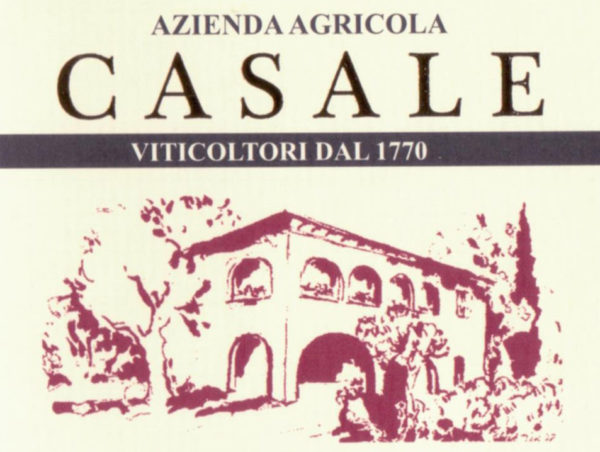
The Estate
Azienda Agricola Casale can trace its history to the end of the 18th century, according to historical texts. Today, it is managed by Antonio Giglioli, who has a degree in prevention techniques in medicine and surgery. He is a pioneer of biodynamics in Tuscany, having begun to explore the relationship between the energies of the cosmos and the dynamic balance of the plant in the early 1980s.
To convince his father to adopt a new approach, Antonio began to cultivate vines planted on a hill following Steiner principles in order to compare them with those vines managed by his father. By 1983, the aromas that were coming from the biodynamic vineyard were incredible, and the resulting wine was fine and complex. Since then, the entire property has been managed by enhancing the metabolism of the plant through the preparation 500, bioactivator of all its processes. The secret for Antonio lies in the biology of the soil and in the availability of high quality elements for the plants, in order to allow them to activate their defenses against diseases. Casale has been Demeter certified since 1995.
Antonio Giglioli is a great interpreter of Sangiovese and biodynamics, with its maximum expression reached in the Chianti DOCG Riserva, but also in its white Trebbiano (aged 10 years in chestnut barrels), its precious and memorable Vinsanto (from Trebbiano – it keeps kegs from the 1960s and some products from his grandfather even earlier), its vinegar, brandy, and even their olive oil.
Location: Situated in Certaldo, between Florence and Siena, in the Val d’Elsa. This is the town where Boccaccio seems to have been born, the cradle of art, history and beauty. But it is also the land of Chianti.
Production Area: 34 hectares, of which only 7 hectares are planted with vines.
Annual Production: 30,000 bottles
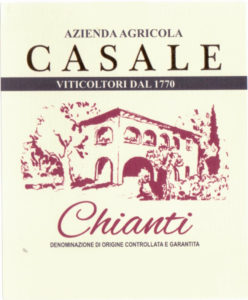
Chianti
Grape Varieties: 98% Sangiovese, 1% Canaiolo, 1% Colorino
Alcohol: 13.5%
Harvest: Manual
Vinification: Maceration for 20 to 30 days to transfer vitality to the wine. The vinifications take place spontaneously with the use of indigenous yeasts – no clarification or stabilization.
Aging: In stainless steel big barrel of 50 hl.
Bottles Produced: 15,000
Tasting Notes: Full-bodied, fresh, and drinkable, proving to have substance and longevity.
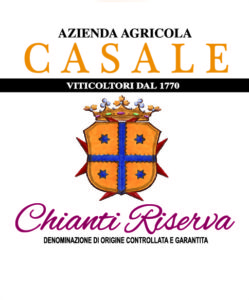
Chianti Riserva
Grape Varieties: 100% Sangiovese
Alcohol: 13.5%
Harvest: Manual
Vinification: Spontaneously fermented with indigenous yeasts and with maceration for 20 to 30 days.
Aging: In chesnut casks of 37 hl for 24 months
Bottles Produced: 13,000
Tasting Notes: A great Chianti Riserva from Antonio Giglioli. This wine is elegant, fine, and delicate, but still fresh and young. Fruity notes and an almost incredible complexity, this is the most surprising wine of the range.
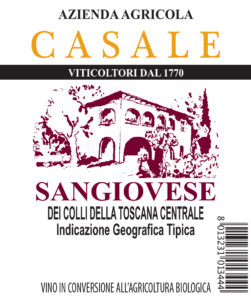
Sangiovese dei Colli della Toscana Centrale
Grape Varieties: 100% Sangiovese
Alcohol: 13.5%
Harvest: Manual
Vinification: Spontaneously fermented with indigenous yeasts and with maceration for 20 to 30 days.
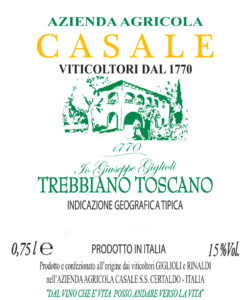
Trebbiano Toscano
Grape Varieties: 100% Trebbiano
Alcohol: 15%
Harvest: Manual
Vinification: Spontaneously fermented with indigenous yeasts and with maceration for 15 days.
Aging: In steel and in barrel
Bottles Produced: 2,200
Tasting Notes: Antonio Giglioli has accustomed us to timeless Chiantis – wines that are fresh and full of life even decades later. But the Casale property is also planted with white Trebbiano, a thick-skinned grape that loves to macerate as if it were a red. This wine is produced from a 55-year-old vineyard (Solatio) with yields of less than 50 q / li hectare. Dry and fragrant, with delicate hints of herbs, wildflowers, and yellow fruit.
Fattoria di Bacchereto (Biodynamic)

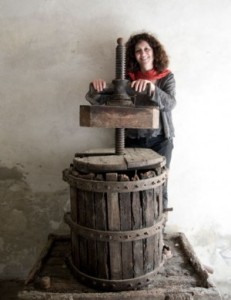
Overview
Situated in Tuscany, on the picturesque hills of Carmignano between Florence and Pistoia, about 180 meters above sea level, lies Fattoria di Bacchereto. It is owned by Rossella Bencini Tesi, who inherited the estate after her father & brother passed away in the 1990s. Having no prior experience in the winemaking process, Tesi left management of the winery to other experts until she was introduced to biodynamic and organic techniques in 2000. She then implemented these methods at the winery, and saw a dramatic change in the environment and resulting wine. The hard soil and malnourished vines were revitalized, and so in turn was the entire Fattoria de Bacchereto estate.
The Terroir
Fattoria di Bacchereto is one of only 14 producers who make Carmigniano wine in the DOCG Carmigniano, the smallest appellation in Italy. Not only is it the smallest, but it is also one of the oldest appellations worldwide, having been first registered in 1716 by Cosimo III de Medici, Grand Duke of Tuscany. It is a hilly and heavily forested area; indeed, it was the preferred hunting grounds for the Medici family when they resided there.
The Wine
To be classified as a Carmigniano DOCG, the wine must age 8 months or longer in oak or chestnet barrels, and must contain at least 50% Sangiovese, 15% Canaiolo Nero, and 10-20% Cabernet Sauvignon, a varietal that was said to have first been introduced to the area by another Medici, Catherine, wife to the King of France.

Carmignano Terre a Mano
Location: The Bacchereto estate in the township of Carmignano (Prato)
Altitude: 250 meters (825 feet) above sea level
Exposure: East and south-southeast
Portion of Vineyard: 6 ha out of 8 ha vineyard
Varietal Blend: Sangiovese (75%),Canaiolo Nero (15%), Cabernet Sauvignon (10%)
Annual Production: Approximately 12,000 bottles
Harvest: By hand, during the last week of September for the Sangiovese and Canaiolo Nero, the first week of October for the Cabernet Sauvignon
Fermentation: Traditional, in epoxy-lined concrete vats without the addition of selected yeasts or other oenological adjuvants. All prduction is organic
Aging: 24 months in 350 liters (90 gallon) Allier oak barrels, followed by six months of bottle aging
Alcohol Content: 14.5%
Tasting Notes: Intense ruby red in color. Penetrating and clean bouquet with notes of red fruit: cherry, strawberry, raspberry, but also prunes, leather, and tobacco. Dry, clean, and elegant, typical of the Carmignano appellation and the vintage. On the palate, the flavors are the same to the nose, typical of Sangiovese, slightly tangy, peppery wine with silky and elegant tannins. 100% vegan!

Sassocarlo Bianco I.G.T. Toscano
Location: The Bacchereto estate in the township of Carmignano
Altitude: 250 meters (825 feet) above sea level
Soil: Marl, limestone, shale and sandstone – 250 mt s.l.m.
Production Area: 1.5 ha out of 8 ha vineyard
Plant Density: 2,778 plants/ha
Average Age of Vines: 35 years
Average Production: 33 quintals/ha
Harvest: 100% manual; first part of October, overripe grapes
Bottles Produced: 3,500
Varietal Blend: Trebbiano 80%, Malvasia 20%
Alcohol Content: 14.0%
Total Sulfur: 52.0 mg/l
Vinification & Maturation: Destalking, light maceration at controlled temperature. Alcoholic fermentation is done with natural yeasts in cement vats, with malolactic done in 350L Allier oak barrels. Refining on the lees for 12-18 months
Tasting Notes: The nose is intense and fruity, with a slight woodiness. On the palate, this wine has great structure, is powerful, velvety, thick, fat, and fine with great length. Easy to drink despite its great power. 100% vegan!
Food Pairings: Pastas and secondi dishes
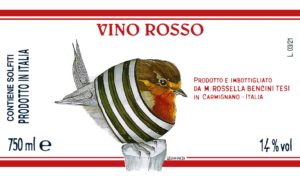
Vino Rosso Terre a Mano
Production Zone: The Bacchereto estate in the township of Carmignano (Prato)
Altitude: 250/300 mt. (825 feet) above sea level
Exposure: East and south-southeast
Production Area: 8 hectares (20 acres)
First Planting: 4 hectares (10 acres) in 1972; 2 hectares (5 acres) in 1993; 2 hectares (5 acres) in 2004
Grape Varieties: 100% Sangiovese
Harvest: Manual during the first week of October.
Vinification: Traditional, in epoxy-lined concrete vats without the addition of selected yeasts or other enological adjustments. Organic production. No clarification or filtration.
Aging: 12 months in 350 liter (90 gallon) Allier oak barrels. No new barrels.
Alcohol: 14%
Tasting Notes: Ruby red color. The bouquet is penetrating, clean, and fruity. On the palate, it is juicy with strong tannins. Good cellaring potential. This is a versatile wine for everyday meals.
L’Erta di Radda (Organic)
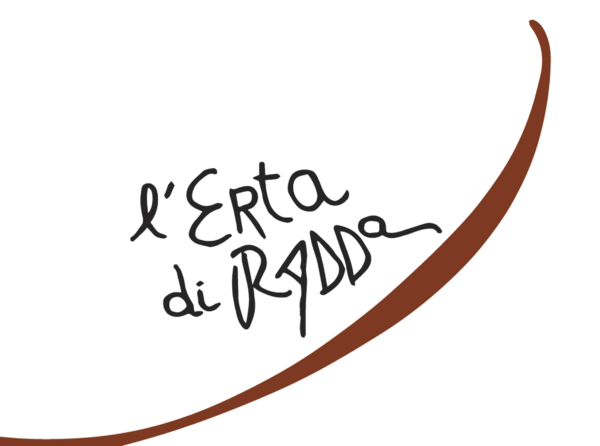
The Estate
The name “L’Erta di Radda” is a reference to the terroir on which this vinyard is situated – L’Erta, or “an upward slope”, and Radda, the name of the historical town in Chianti. This small, family-owned estate is managed by Diego Finocchi. In 2006, when Diego was just 24 years old, he purchased 3 hectares of a vineyard from an old farmer in Radda to realize his dream: to become a student of viniculture and enology, and become a winemaker. In 2008, he expanded the vineyard by purchasing an additional 2 hectares. Up until the 2008 vintage, the wine he made was all sold to large customers or bottling plants. Starting with the 2009 vintage, Diego concentrated on a selection of grapes from older vines to produce his own Chianti Classico. The vines were originally planted in 1967 but have been renewed over the course of time – 1 hectare in the year 2006 and another one in 2009. From the very beginning, Diego has farmed the vines organically in order to respect the environment, the soil, and biodiversity. He manages every aspect of the 5-hectare estate, from the trimming of the grape vines, to the commercialization of wine.

Toscana Rosso Due & Due
Soil: Clayey/sandy with a good proportion of galestro and alberese
Altitude: 430 meters above sea level
Exposition: Southeast
Grape Varieties: The Toscana Rosso Due & Due is produced from the union of four grape varieties – 70% of the blend is red grapes (60% Sangiovese and 10% Canaiolo) and 30% is white grapes (Trebbiano and Malvasia Toscana).
Harvest: Manual. The grapes are harvested from a single vineyard, planted in 1971.
Vinification: Fermentation of all the grape varieties takes place in the same stainless steel container, with the technique of carbonic maceration to obtain a real aromatic mosaic. Shortly before the end of the 12-day alcoholic fermentation, the racking is carried out and the “Servizio Toscano” (addition of slightly dried grapes) is added to the wine in order to have a second fermentation.
Aging: 12 months in stainless steel tanks and cement tanks. Bottling takes place in June.
Alcohol: 13.5%

Chianti Classico
Soil: Clayey/sandy with a good proportion of galestro and alberese
Altitude: 430 meters above sea level
Exposition: Southeast
Production Area: 3 ha vineyard (1 ha planted 2006, 1 ha in 2009, and 1 ha in 2012)
Grape Varieties: 95% Sangiovese and 5% Canaiolo
Harvest: Manual
Vinification: During the alcoholic fermentation (which on average lasts from 10-15 days), délestage is carried out, pumping over and punching down. Alcoholic fermentation takes place without the use of selected yeasts. The racking is determined after tasting, on average the maceration lasts from 25 to 30 days. Malolactic fermentation takes place partly in wood, partly in stainless steel.
Aging: Once the malolactic fermentation in stainless steel is completed, the wine is aged for 24 months in 2,000-liter oak barrels (untoasted, just for micro-oxgenyation). Bottling in March.
Tasting Notes: Floral, structured, and youthful. The aromatics come from the Canaiolo, and the balance in acidity and fruitiness from the Sangiovese.
Alcohol: 13.5%

Chianti Classico Riserva
Production Area: 1 ha single vineyard
Soil: Clayey/sandy with a good proportion of galestro and alberese. Soil is red and rich in iron.
Altitude: 430 meters above sea level
Exposition: Southeast
Grape Varieties: 100% Sangiovese, selected from a single vineyard.
Harvest: Manual
Vinification: The grapes are vinified in a traditional way, without the use of selected yeasts. Maceration for 45 days. Fermentation lasts about 15 days, during which pumping over and punching down are carried out. At the end of the alcoholic fermentation, the wine remains in contact with the skins for about 20 days.
Aging: Once the malolactic fermentation in stainless steel is completed, the wine is aged for 24 months in 2,000-liter oak barrels. Bottling in June.
Tasting Notes: Chocolate on the nose, cinnamon, rich and high toned.
Alcohol: 13.5%
Loacker Corte Pavone (Biodynamic)
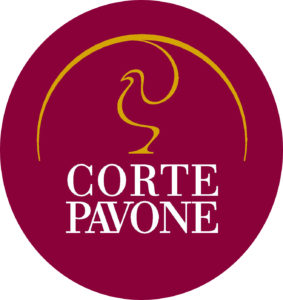
The Estate
Located in Tuscany, Corte Pavone extends for 16 hectares across the scenic Montalcino hillsides at an altitude of 500 meters, the vineyards surrounded by fields and thick Mediterranean scrub. This unique landscape and climate along with the light, clayey soil contribute greatly to the wine’s character.
The estate has belonged to the Loacker family since 1996, established by Rainer Loacker who for 20 years worked in the chocolate wafer business before making the plunge into the wine business. Rainer was an organic pioneer when he first started out, opting to use more natural treatments instead of pesticides on his vines. Gradually he made the transition to biodynamic farming. Today, Loacker only uses homeopathic treatments on their vines, and 3 years ago, a new bio-architectural cellar was constructed at the heart of the winery.
Franz Josef, Rainer’s son, oversees commercial aspects of the 4 Loacker vineyards (Schwarhof in Alto Adige, 2 in Tuscany, and 1 in Austria). His brother, Hayo, who trained in France, South Africa, and the US, manages the vines and wine making.
This winery is part of the Italian Organic Wine Route.
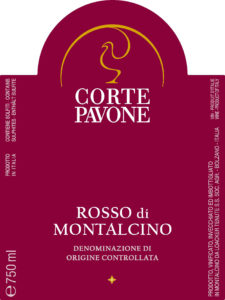
Rosso di Montalcino
Tasting Notes: Ruby red color. Ethereal notes of violet, forest floor, licorice, plum, spices, and tobacco. Medium-bodied with lively acidity and strong yet silky tannins. Pleasant, long finish. Dry and persistent.
Cellaring Potential: Drink from now to 2028.
Food Pairings: Pairs well with meat dishes, pecorino cheese, and plates served with fresh olive oil
Serving Temperature: 16-18°C
Region: Montalcino – Tuscany
Closure: Natural cork
Fun Fact: In 1984, this wine received the DOC classification due to its popularity with consumers. Over the years it has evolved into the “alter ego” of the Brunello.
First Vintage: 1998
Grape Varieties: Sangiovese Grosso
Classification: Rosso di Montalcino DOC
Average Age of the Vines: 16
Vinification: Spontaneous fermentation starts after the ‘pied-de-cuve’ is introduced and takes place in small stainless steel vats and in wooden, truncated, cone-shaped barrels with automated fullers. Macerations lasts 16 – 18 days. Extraction through delestage, pressing, and remontage.
Aging: Wood aging for 16 months, mostly in 30 hL barrels and in part in barriques. No fining, light filtration.
Altitude at Sea Level: 450-500 meters
Soil: Clayey soil rich in rock fragments, particularly marl
Vineyards and Year of Planting: Pian Ginestra (1984), Macchiese (1992), Fior Meliloto (1999), Campo Levante (2009 grafted)
Training System: Espalier with spur pruned
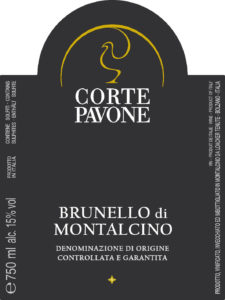
Brunello di Montalcino
Tasting Notes: Elegant aromas of dark chocolate, roasted meats, prunes, dried figs, ripe blackberries, and hints of truffle. On the palate, there is elegant acidity, silky tannins, discreet minerality, notes of ripe berries, and hints of mild spices. Good length. 100% vegan!
Cellaring Potential: Drink from 2018 to 2031
Food Pairings: Ideal with dark meet or matured cheeses like Pecorino
Serving Temperature: 17-18°C
Region: Montalcino – Tuscany
Closure: Natural cork
Background: The residents of Montalcino ‘ilcinesi” called the wine Bruno (brown) since the wine had an intense brownish color. Over the centuries, Bruno became Brunello.
First Vintage: 1990
Grape Varieties: 100% Sangiovese
Classification: Brunello di Montalcino DOCG
Average Age of the Vines: 15 years old
Vinification: Short maceration before fermentation at 8°C. Fermentation with indigenous yeasts in small stainless steel vats and in wooden truncated-cone shaped barrels with automated fullers; 30 days skin contact. Extraction through delestage, pressing and remontage.
Aging: During the first year, 30-40% in Tonneaux with 500-liter capacity, with the remaining quantity in large wooden barrels. 3 years oak aging in total. No filtration.
Altitude at Sea Level: 450-500
Soil: Clayey soil rich in rock fragments, particularly marl
Vineyards and Year of Planting: Anemone (1998), Mulino a Vento (1998), Campo Marzio (1967), Ramerino e Aromatica (1998)
Training System: Espalier with spur pruned
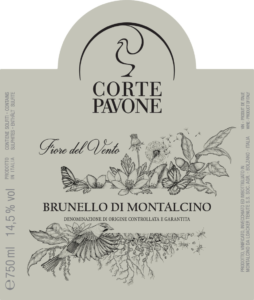
Brunello di Montalcino Fiore del Vento
Region: Montalcino – Tuscany
Altitude: 450-500 above sea level
Soil: Clayey soil rich in rock fragments, particularly marl
Training System: Espalier with spur pruned
Vineyards & Year of Planting: Anemone (1998)
Fun Fact: The residents of Montalcino ‘ilcinesi” called the wine Bruno (brown) since the wine had an intense brownish color. Over the centuries, Bruno became Brunello.
Grape Varieties: Sangiovese
Classification: Brunello di Montalcino DOCG
Average Age of the Vines: 20 years old
Yield: 4,000 kg/ha
Vinification: Short maceration before the fermentation at 8 degrees centigrades, fermentation with indigenous yeasts in small stainless-steel vats and in wooden truncated cone-shaped barrels with automated fullers and 30 days of skin contact. Extraction through delestage, pressing, and remontage.
Aging: During the first year, 30-40% in Tonneaux with 500 Lt. capacity and the remaining quantity in large wooden barrels. 3 years oak aging in total. No filtration.
Tasting Notes: Bright ruby red with garnet rim. The nose is very intense and rich–luscious aromas of blackberries, dark cherries, and plums, with a bit of cocoa in the background. Full and round at first taste; mid-palate it opens up, showing aromas of dark berries, intense fruit, and a lot of velvety tannins. Complex wine with long and full finish.
Cellaring: Drink from 2018 to 2037
Food Pairings: Ideal with dark meats or matured cheeses like Pecorino.
Serving Temperature: 15-17°C
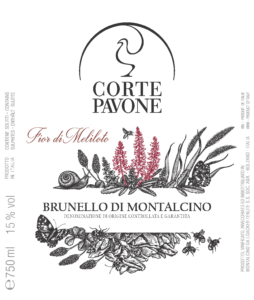
Brunello di Montalcino Fior di Meliloto
Location: Italien, South Tyrol, Bozen & Umgebung
Lieu-Dit: Vigna Meliloto
Altitude: 450 – 500 m
Grape Varieties: 100% Sangiovese
Average Age of the Vines: 23 years old
Harvest: The grapes are handpicked and sorted, then placed into 15 kg casks.
Vinification: Partial malolactic fermentation. Spontaneous with Pied de Cuve. 100% mash fermentation for 1-16 days; complete destemming. Skin contact for 1-20 days. Fermentation – 5 days of pneumatic punching down and 18 days pumping over.
Aging: In small, 500 liter oak barrels for 1-12 months and 20,000 liter barrels for 1 month.
Certifications: Vegan, organic, La Renaissance des Appellations, bio-dynamic
Serving Temperature: 15 – 17 °C
Cellaring: 19-20 years
Optimum Drinking Years: 2020 – 2039
Tasting Notes: Dark ruby red color. Notes of dried fruit on the nose. Aromas of prune, sage, and light peppermint. Well-integrated wood with lovely, long-lasting aftertaste.
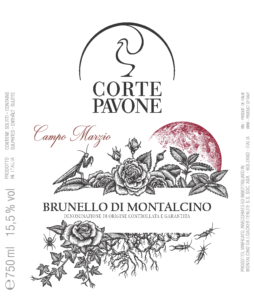
Brunello di Montalcino Campo Marzio
Location: Italien, South Tyrol, Bozen & Umgebung
Lieu-Dit: Vigna Campo Marzio
Altitude: 450 – 500 m
Grape Varieties: 100% Sangiovese
Average Age of the Vines: 50 years old
Harvest: The grapes are handpicked and sorted, then placed into 15 kg casks.
Vinification: Partial malolactic fermentation. Spontaneous with Pied de Cuve. 100% mash fermentation for 1-16 days; complete destemming. Skin contact for 1-20 days. Fermentation – 5 days of pneumatic punching down and 18 days pumping over.
Aging: In oak barrels for 1-36 months and steel tank for 1 month.
Certifications: Vegan, organic, La Renaissance des Appellations, bio-dynamic
Serving Temperature: 15 – 17 °C
Cellaring: 19-20 years
Optimum Drinking Years: 2020 – 2039
Tasting Notes: Ruby red color with aromas of morello cherry. The wine is structured and powerful on the palate, but with gentle tannins and a crisp acidity. Long, elegant aftertaste with notes of almond.
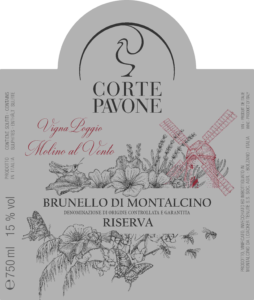
Brunello di Montalcino Vigna Poggio Molino Al Vento Riserva
Name: The name of the biggest cru vineyard “Molino al Vento” (meaning “windmill”) is a reference to the wind coming from the sea, which always rushes through the vines and most probably used to operate a windmill in this area.
Location: Italy, Toscana
Quality Grade: DOCG Brunello di Montalcino
Classification: Riserva
Sea Level: 450 – 500 m
Soil: Stony; galestro limestone slate
Harvest: Handpicked into 15 kg cask. Manual grape sorting.
Vinifcation: Fermentation is spontaneous with pied de cuve. Malolactic fermentation is carried out.
Aging: 1 month in 3000 L stainless steel tank; 36 months in 3000 L used oak barrels
Production: 3,600 bottles
Tasting Notes: Complex fruity nose. Good tannin, warm vintage noticeable, still very balanced on the palate. Long, complex finish.
Certificates: Vegan, organic, biodynamic
Allergens: Sulfites
Serving Temperature: 15-17 °C
Cellaring Potential: 20 years
Optimum Drinking Years: 2021 – 2040
Loacker Valdifalco (Biodynamic)
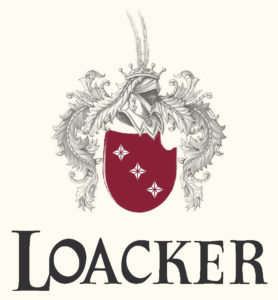
The Estate
Located near the sea, in the middle of the “Parco dell Uccellina” in Tuscany, there are 22 hectares of vineyards belonging to the Loacker Valdifalco winery, planted with Sangiovese, Cabernet Sauvignon, and Syrah grapes.
The Morellino di Scansano is grown close to the old Roman road called “Aurelia.” It is a red wine that displays spiciness and suppleness and is accompanied by ripe notes of cherry and blackberry. The cultivation at Loacker Valdifalco is biodynamic.
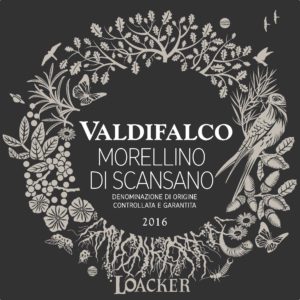
Morellino di Scansano
Tasting Notes: Intense purple-red color. The nose is rich with red fruits, ripe black cherry, blackberry, and blackcurrant notes. Full-bodied with firm tannins and a long, warm, and soft finish.
Cellaring Potential: Drink from now to 2026
Food Pairings: Ideal match for wild game and Pecorino cheese.
Serving Temperature: 15-17°C
Region: Maremma – Tuscany
Closure: Natural cork
Curio: Being father to all the great Tuscan wines, it is no surprise that Sangiovese also reigns supreme in the southern part of Tuscany. The local designation Morellino dates back to the Middle Ages. According to the etymology, the name of Morellino derives either from the Morello horses which towed the carriages, or from the dark-colored berries that are called “moro.” The Sangiovese grapes from Scansano are unique in that they had no contact with other vines for over 150 years. There was only once an encounter with the Alicante back in the 1700s.
First Vintage: 2002
Grape Varietals: Sangiovese (85%), Syrah (15%)
Classification: Morellino di Scansano DOCG
Average Age of the Vines: 14 years old
Date of Harvest: Sept. 2-21, 2016
Yield (kg/ha): 55 hl/ha
Vinification: Fermented with indigenous yeasts in steel vats at a temperature of 30 degrees max. Remontage and delestage in order to obtain a better extraction.
Aging: Sangiovese ages in stainless steel and tonneaux, Syrah in tonneaux and barriques. No fining, light filtration.
Total Production (hi): 300
Date of Bottling: Oct. 16, 2017 – Mar. 7, 2018
Alcohol: 14.5%
Total Acidity: 5.74
Residual Sugar: 2.79
Sugarfree Extract: 31.8
Altitude at Sea Level: 10-60 meters
Soil: Ferrous, limy soils
Vineyards and Year of Planting: 19 different fields (2000-2001)
Training System: Espalier with spur pruned
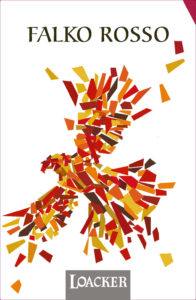
Toscana Rosso Falkorosso
Overview: The grapes for the Falkorosso come from both Tuscany wineries of the Loacker family, Corte Pavone at Montalcino and Valdifalco in Maremma. The name for the wine has its historic origins in the tradition of falconry in Maremma.
Region: Maremma – Tuscany
Classification: IGT Toscana Rosso
First Vintage: 2007
Grape Varieties: 81% Sangiovese, 16% Merlot, 3% Cabernet Sauvignon
Average Age of the Vines: 15 years old
Yield (kg/ha): 45 hl/ha
Vinification: Short maceration before fermentation at 8 degrees centigrade. Fermentation with indigenous yeasts at 28 degrees during the first 7-10 days, then it goes slowly down to 20 degrees shortly before the racking. Slow extraction through remontage and delestage.
Aging: In stainless steel tanks and big oak barrels. No fining; sterile filtration.
Alcohol: 14%
Total Acidity: 5.65
Residual Sugar: 0.7
Tasting Notes: Ruby red. The nose is very neat and clean. Red fruits with a bit of spices and hints of eucalyptus. Good dry tannins. A versatile wine suitable for different occasions and food pairings. Medium-bodied.
Food Pairings: Perfect companion for dishes like risotto, pasta, stew, and cheeses like Pecorino.
Serving Temperature: 14-16 degrees Celsius
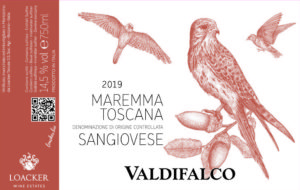
Sangiovese Maremma Toscana
Tasting Notes: Dark red color. The nose is rich in fresh fruits, such as raspberry and currant. On the palate there are soft tannins, which invite one to take another sip. A wine to simply enjoy.
Alcohol: 14.5%
Acidity: 5 g/l
Residual Sugar: <1 g/l
Drinking Temperature: 15 – 17 °C
Aging Potential: Small (8 years)
Optimum Drinking Year: 2021 – 2029
Origin: Italy, Toscana
Classification Quality Grade: DOC Maremma Toscana
Site: Maremma
Grape Variety: Sangiovese 100%
Varietal Age: 21 years
Plant Density: 5000 plants/ha
Varietal Yield: 6000 liter/ha
Harvest: Handpicked into 16 kg cask. Sorted manually.
Vinification: Spontaneous fermentation with Pied de Cuve. Skin contact for 1-15 days. Malolactic Fermentation.
Aging: 6 months in stainless steel tanks.
Food Pairing: Ideal match for local dishes of the Maremma, wild boar and venison meat. It also goes perfectly with Pecorino Toscano DOP.
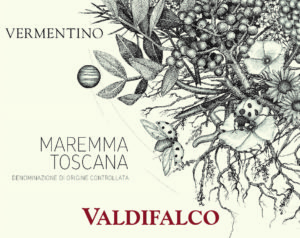
Vermentino Maremma Toscana DOCG
Wine Type: Still wine, white, dry
Alcohol: 13.5%
Residual Sugar: <0.5 g/l
Acid: 4.9 g/l
Certificates: Vegan, organic, La Renaissance des Appellations, Biodynamic
Allergens: Sulfites
Serving Temperature: 10 – 12°C
Cellaring: About 2 years
Classification Quality Grade: DOC Maremma Toscana
Site: Maremma
Grape Varieties: Vermentino 100%
Average Age of the Vines: 19 years old
Harvest: Handpicked, vine selection, 15 kg cask. Manual grape sorting.
Vinification: Spontaneous fermentation; malolactic fermentation; temperature controlled
Aging: 50% in steel tank and 50% in old oak barrels; 1-6 months
Cork: Glass
Production: 730 Bottles
Tasting Notes: A refreshing summer wine! This Vermentino is fragrant with Mediterranean fruit and has a certain minerally, lightly salty aroma. Juicy on the pallet with nice acidity and elegance. 100% vegan!
Patrizia Cencioni
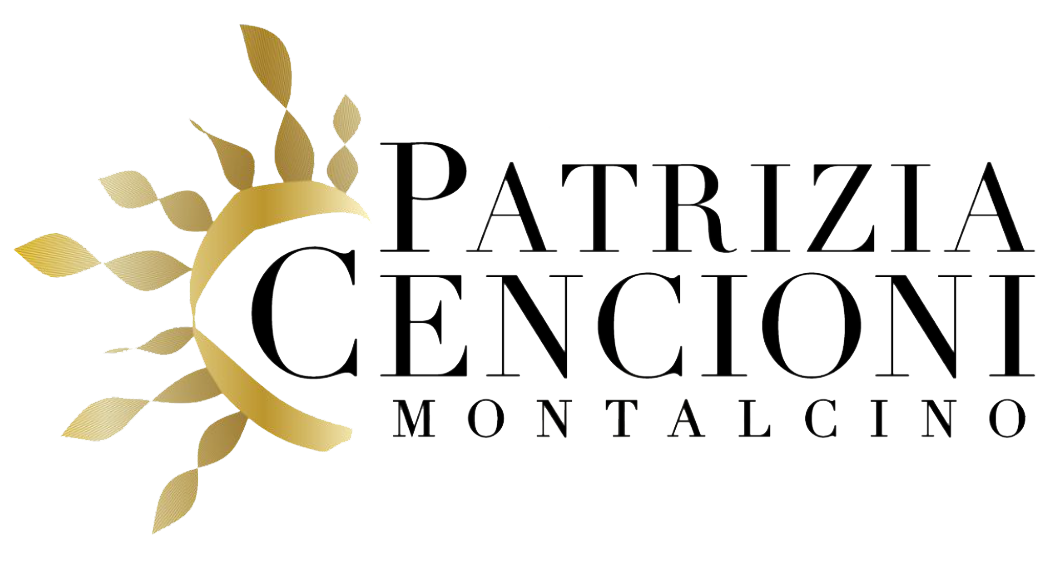
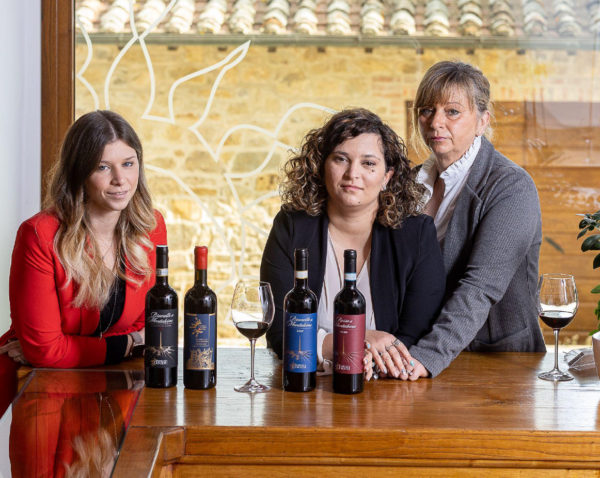
The Estate:
Azienda Agricola Patrizia Cencioni is a family-run business established in 1989. It is managed by the owner Patrizia and her two daughters, Annalisa and Arianna.
The Cencioni family’s involvement in the wine business goes back to the 1950s. Patrizia’s grandfather Giuseppe Cencioni had previously owned a winery in Montalcino and was also one of the founders of the Brunello di Montalcino Consortium.
The main building on the property was built around 1700. In 1992, Patrizia spearheaded the expansion of the winery with the building of the winemaking cellar in 1992, the aging cellar in 2002, and finally in 2018 a building entirely dedicated to bottling, labeling, and storage. The original vineyard in 1989 was about 6 hectares (14.8 acres); in the 2000s the production was expanded with a further 2 hectares. Today, the estate spans 50 hectares in total, of which 9 hectares (22.23 acres) are planted with Sangiovese and 7 hectares with olive trees, from which they produce their extra virgin olive oil.
Brunello di Montalcino, Rosso di Montalcino, Rosato from 100% Sangiovese, and the exclusive Solarianne are the flagship products of the winery.
The Vineyards:
The first vineyards of Azienda Agricola Patrizia Cencioni were planted in 1989. They cover an area of 9 hectares of hilly terrain on a plateau overlooking the Val d’Orcia at an altitude of approximately 350 meters above sea level. The vineyards are located about 2 km from the town of Montalcino and surround the cellars and tasting rooms.
The peculiarity of the soil is that it has different types of stratification and composition – soils with a clay base, slightly sandy, and a large percentage of marl. This makes the Cencioni wines richly fragrant and complex in their structure.
Since the vineyards open onto the valley, the vines are exposed to a fresh breeze in the summer months which allows for a slow and healthy ripening of the grapes. The care of the vineyards is carried out mainly by hand, with non-invasive practices in full respect of the environment.
The harvest, which generally takes place at the end of September, is carried out according to tradition in order to guarantee the maximum integrity and selection of the best grapes.
Vinification:
The grapes are transported from the vineyard to the winemaking cellar, where the best winemaking equipment makes it possible to combine tradition and modernity.
Alcoholic fermentation and malolactic fermentation take place inside the cellar. At the end of the former, the must is pressed to separate the pomace that will be destined for the production of Grappa. The wine, on the other hand, continues malolactic fermentation in steel vats.
Aging:
Taking advantage of a natural difference in height, the aging cellar was built in 2002. It is an underground structure that naturally maintains a constant temperature.
The barrels are made from French and Slavonian oak: 2.5 hectoliter barriques, 7.5 hectoliter tonneaux, and large 26 and 42 hectoliter barrels. The different capacities give elegance and typicality to the product.

Rosso Di Montalcino
Grape Variety: 100% Sangiovese
Production Area: 7.47 hectares (18.46 acres)
Altitude: 350 meters above sea level
Plant Density: 5,000 vines/hectare
Growing Method: Horizontal spurred cordon and Guyot
Average Yield: 70 ql / ha
Vinification: Manual selection of the bunches, gentle de-stemming, controlled temperature during the fermentation, 15-20 days of skin-contact with the must.
Aging: 12 months in 26 hl Slavonian oak barrels
Tasting Notes: Bright ruby red color. Vivid aromas of fresh cherry and violet, with hints of spice giving complexity. Well-structured on the palate, great crispness and drinkability. Well balanced with an evident pleasing character.
Food Pairings: Red and white meats, cold cuts and cheeses
Serving Temperature: 18°C (64.4 F)
Alcohol: 14.0% Vol.

Brunello di Montalcino
Grape Variety: 100% Sangiovese
Production Area: 7.47 hectares (18.46 acres)
Altitude: 350 meters above sea level
Plant Density: 5,000 vines/hectare
Growing Method: Horizontal spurred cordon and Guyot
Average Yield: 55 ql / ha
Vinification: Manual selection of the bunches, gentle de-stemming, fermentation at controlled temperature, 25 days of skin contact.
Aging: 40 months in 26, 42, and 7.5 hl French and Slavonian oak Barrels.
Tasting Notes: Intense and brilliant ruby red color. Intense, vibrant aromas of cherry, red berries, and violets, nicely complemented by notes of licorice, spices, and tobacco. Remarkable personality on the palate, full of energy. Crisp and elegant at the same time. The silky tannic structure is very pleasing to the palate, with a long finish.
Food Pairings: Perfect with red meats and wild game.
Serving Temperature: 18°C (64.4 F)
Alcohol: 14.0% Vol.
Prunatelli
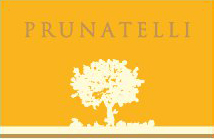
The Estate
The Grati family has been growing grapes and olives in Rùfina for 5 generations. The Galiga and Vetrice estates are owned by the Grati brothers and extend over an area of 562 hectares, on the hills between Pontassieve and Rùfina, and 100 hectares are dedicated to vineyards. The family’s bonds with the land are deeply rooted, so deeply that they have even affected its morphology, with two lakes they created: Galiga and Vetrice. The landscape, with its vineyards interspersed with 12,000 olive trees and cypresses towering over the hills, is typically Tuscan.
The Terroir
The soil is fertile and clayey, with an eastern exposure. It enjoys a dry, ventilated climate to produce outstanding grapes: Sangiovese, Canaiolo, and Colorino along with Malvasia, Trebbiano, Cabernet, and Merlot.
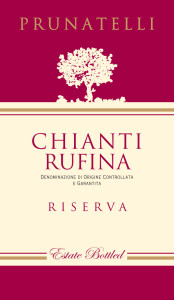
Chianti Rufina Riserva
Grape Varieties: 90% Sangiovese, 7% Canaiolo, and 3% Colorino.
Aging: Chianti Rufina Riserva is bottled after 2 years of aging in wooden barrels and then aged in the bottle for at least 3 months.
Tasting Notes: This is a rustic and robust Chianti Riserva. Full-bodied with fine tannins and black fruit, spice, and meaty notes on the palate. Long, mellow finish.
Serving Suggestions: Grilled red meats, game, and aged cheeses.
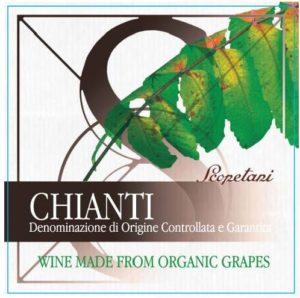
Chianti Scopetani
**Organic**
Grape Varieties: Sangiovese (90%) and Canaiolo Nero (10%)
Exposure: West / Southwest
Soil: Medium composition, clayey-calcareous.
Certification Auth.: QCertificazioni
Training Methods: “Capovolto”, the typical Tuscan training method, and cordon-training.
Plant Density: 3,000 vines per ha for vines 60+ years of age; 5,000 vines per ha for younger vines
Age of the Vines: 30-40 years for older vines and 7-14 years for newer vines
Yield: 70-80 Quintals/hectare
Harvest: Manual and mechanically done, from mid-September to mid-October
Vinification: In stainless steel vats with controlled temperature, fermentation at 28-30°C, daily pumping over, period of maceration 20-25 days. After the malolactic fermentation, blending in stainless steel vats.
Tasting Notes: Lively, ruby red color. The aroma is boozy and flowery with a hint of violet. Dry and harmonious with soft tannins.
Food Pairings: Ideal with meats and cheeses.
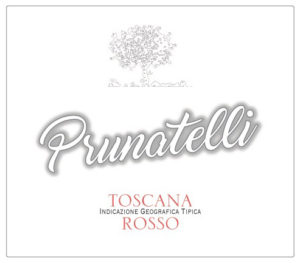
Rosso di Toscana
Varietal Composition: 100% Sangiovese
Tasting Notes: A frank wine with a bouquet that smells of ripe black cherries and plums. The palate is uncomplicated and most pleasant to drink. The finish reveals the Sangiovese freshness that gives the wine a typical Tuscan elegance.
Serving Suggestions: Excellent with red meats and aged cheeses.
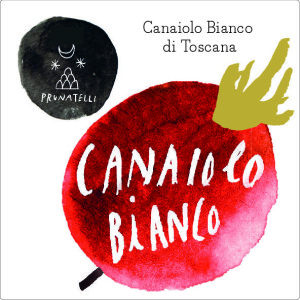
Canaiolo Bianco
Overview: The Canaiolo Bianco variety is a mutation of the red Canaiolo grape, a grape that is traditionally used in the production of Chianti. The Grati family discovered this varietal by chance in their vineyard and decided to dedicate a little over 1 hectare to the cultivation of this grape. They now produce about 180 cases of this rare wine annually.
Vinification: The harvested grapes are pressed and left in contact with the skins for about a day, followed by fermentation in stainless steel tanks.
Aging: The wine is aged in a combination of stainless steel tanks and wooden barrels for about a year prior to bottling.



